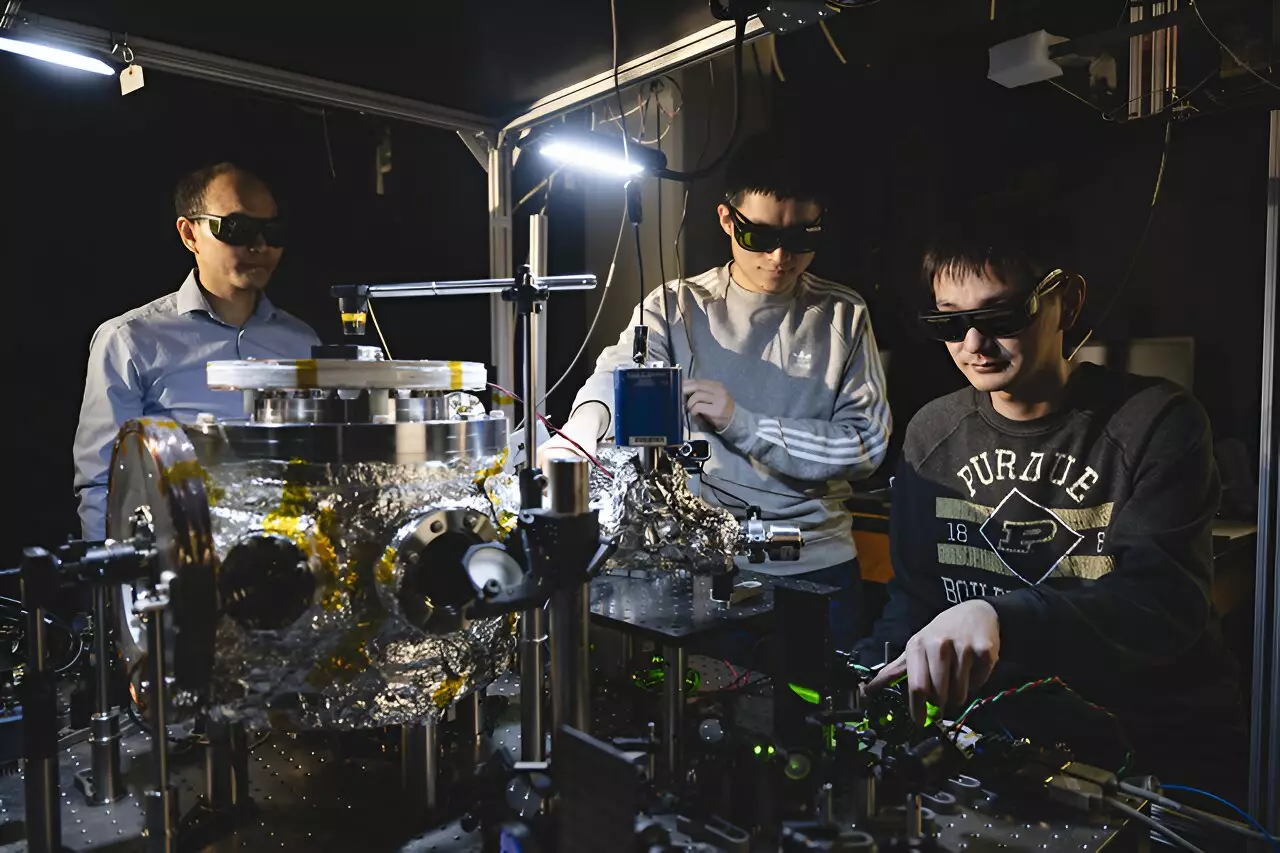At Purdue University, a groundbreaking experiment is taking place that bridges the gap between quantum mechanics and vibrant imagery reminiscent of a disco ball. Researchers, under the guidance of Prof. Tongcang Li, have created a remarkable setup using fluorescent nanodiamonds that are both levitated and spun at staggering speeds—up to 1.2 billion rotations per minute. This phenomenon not only simulates the twirling of a disco ball but also provides a unique platform for the exploration of quantum properties and spin qubits entwined in these minute gems.
For many, the idea of combines art and science in such a whimsical way may seem far-fetched. However, the implications of this research reach deep into the underpinnings of quantum physics and its relationship to gravity. Among the team’s findings is the observation of the Berry phase, which speaks volumes about the interaction between quantum states and the physical rotation of the diamonds themselves.
The engineering behind these fluorescent nanodiamonds is noteworthy. Creating diamonds at an average diameter of 750 nm is not as simple as it sounds. The researchers employed high-pressure and high-temperature processes to synthesize these structures, followed by irradiating them with high-energy electrons to establish nitrogen-vacancy centers that host the electron spin qubits. When exposed to a green laser, these diamonds scatter red light, providing an excellent method for analyzing their spin states.
To monitor the diamonds’ rotation, a specialized infrared laser was positioned to analyze how the light scattered from the spinning diamond would vary directionally, revealing rotational speed and dynamics. This high-precision method showcases the sophistication and craftsmanship required not only in quantum physics but also in advanced materials science and engineering.
Historically, experiments involving levitated diamonds faced significant hurdles, particularly concerning maintaining their stability in a vacuum and efficiently reading the spin qubit states. By leveraging a specialized ion trap, Li and his team successfully achieved a fully levitated environment that minimized loss and allowed for real-time analysis of qubit behavior. This is a notable advance that not only highlights the technological prowess at Purdue but also sets a precedent for future experiments that harness similar capabilities.
It is particularly interesting to note that the team did not work in isolation. Collaborations with outside experts provided critical insights that shaped the experimental design and methodology, thus underscoring the importance of interdisciplinary work in advancing scientific understanding.
One of the most captivating ramifications of this research lies in its potential applications. The rotation of diamonds containing embedded spin qubits may pave the way for precision measurements critical in fields such as navigation and electromagnetism. The promise of creating large quantum superpositions offers an unprecedented opportunity to investigate the fundamentals of quantum mechanics, and possibly even the quantization of gravity.
The concept that general relativity and quantum mechanics represent the pinnacle of scientific achievement only enhances the significance of Purdue’s discoveries. Understanding how these two frameworks interact through experimental means could ground the principles of quantum gravity, leading to advancements in both theoretical and applied physics.
Beyond academia, the implications of this work extend into industrial realms as well. Applications in developing sensitive accelerometers and electric field sensors could transform numerous technologies. Organizations such as the United States Air Force Research Laboratory are actively exploring optically levitated particles for their potential in improving navigation and communication technologies, aimed at addressing pressing contemporary challenges.
As the realm of quantum physics grows, so too do the possibilities for its application in diverse fields, ushering in a new era of innovation driven by exquisite precision and understanding derived from such experiments as those occurring at Purdue University.
As the research community continues to unravel the intricate details of quantum mechanics, projects like Li’s innovative “disco party” signify a vibrant evolution in the field. Collectively, they represent not merely an experimental achievement but a lively journey into the fundamental principles that govern our universe. Continued exploration of levitated nanodiamonds and their embedded spin qubits will inevitably yield new insights, forging pathways that could redefine our understanding of gravity and quantum interactions. The dance of science, indeed, is just beginning.

